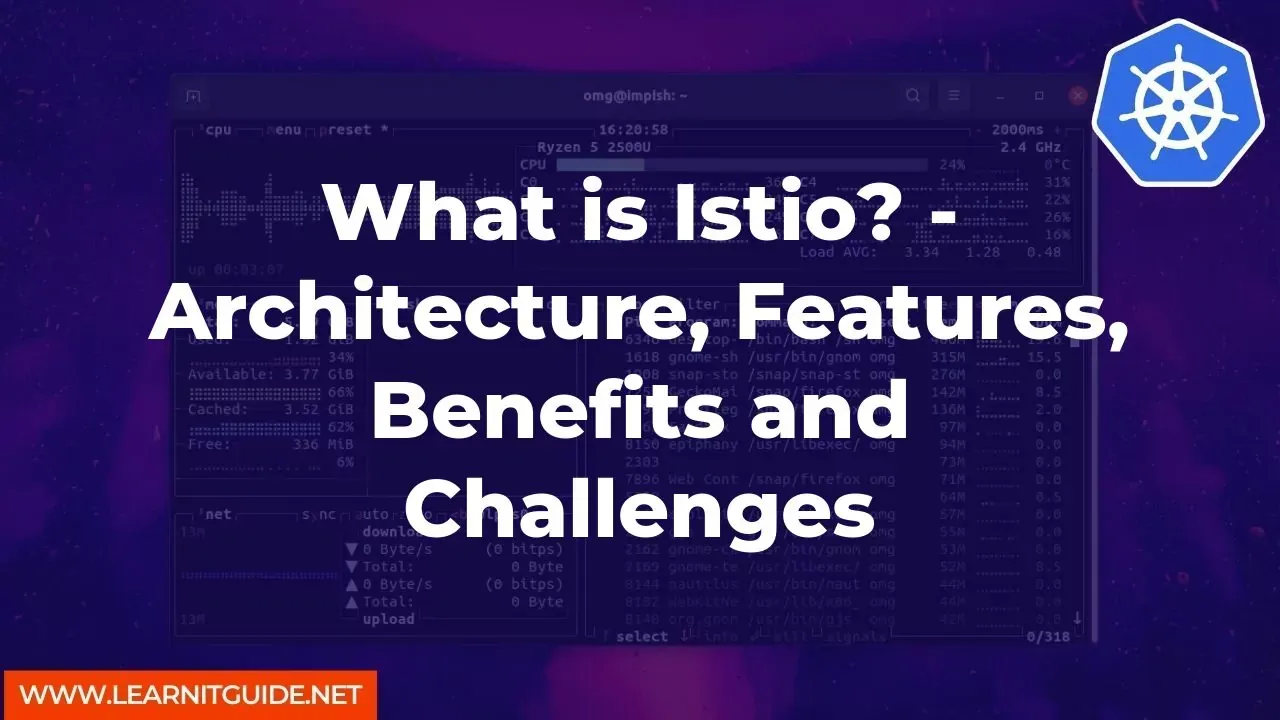What is Istio?
Istio is an open-source service mesh platform used to connect, manage, and secure microservices. It provides a uniform way to manage traffic flow between microservices, enabling faster deployment and easier management of complex distributed systems.
Istio is an essential tool for container-based applications and microservices architectures, providing advanced features like traffic management, service discovery, load balancing, security, and observability.
In this article, we will explore the architecture, features, benefits, and challenges of Istio.
Architecture of Istio:
Istio architecture consists of three main components:- Data Plane: It is responsible for intercepting traffic between services and routing it according to the rules defined in the control plane. Istio provides two data planes: Envoy and Linkerd.
- Control Plane: It manages and configures the data plane's behavior. It provides service discovery, traffic management, security, and observability features to the data plane.
- Mixer: It is responsible for enforcing policies and collecting telemetry data from the data plane. Mixer is now deprecated, and Istio 1.5 and later versions use a new component called Istiod.
Features of Istio:
Istio provides various features that help in managing, securing, and monitoring microservices. Some of the key features are:- Traffic Management: Istio can route traffic based on various criteria like headers, URL, or user identity. It can also apply fault injection and circuit breaking to prevent cascading failures.
- Security: Istio provides a robust security framework that includes mutual TLS authentication, authorization, and encryption.
- Observability: Istio provides end-to-end monitoring and tracing of microservices. It integrates with tools like Prometheus, Grafana, and Jaeger to provide a comprehensive view of the microservices' performance and behavior.
- Service Mesh Expansion: Istio can extend its features to external services and legacy applications without requiring any code changes.
- Multi-Cluster Support: Istio can manage services deployed across multiple clusters and data centers.
Benefits of Istio:
- Simplified Microservices Management: Istio provides a centralized platform to manage and monitor microservices. It eliminates the need for custom code to handle features like traffic management, security, and observability.
- Enhanced Security: Istio provides robust security features like mutual TLS authentication and encryption to protect microservices from external threats.
- Improved Reliability: Istio's traffic management features prevent cascading failures and improve application reliability.
- Better Developer Productivity: Istio provides a streamlined way to manage microservices, enabling developers to focus on writing code and delivering features faster.
Challenges of Istio:
While Istio offers many benefits, it also presents some challenges. Some of the key challenges are:- Complexity: Istio's advanced features come at the cost of increased complexity. It requires a deep understanding of Kubernetes, service meshes, and networking concepts.
- Performance Overhead: Istio adds a performance overhead due to its additional layers of proxies and encryption. This overhead can be minimized by tuning Istio's configuration and using high-performance infrastructure.
- Learning Curve: Developers and operations teams need to learn and understand the Istio architecture and its features to use it effectively.
Istio is a powerful service mesh platform that provides advanced features for managing, securing, and monitoring microservices. Its traffic management, security, and observability features make it an essential tool for container-based applications and microservices architectures. While Istio presents some challenges, its benefits outweigh them, making it a popular choice for modern microservices architectures.
Related Searches and Questions asked:
That's it for this post. Keep practicing and have fun. Leave your comments if any.








0 تعليقات